
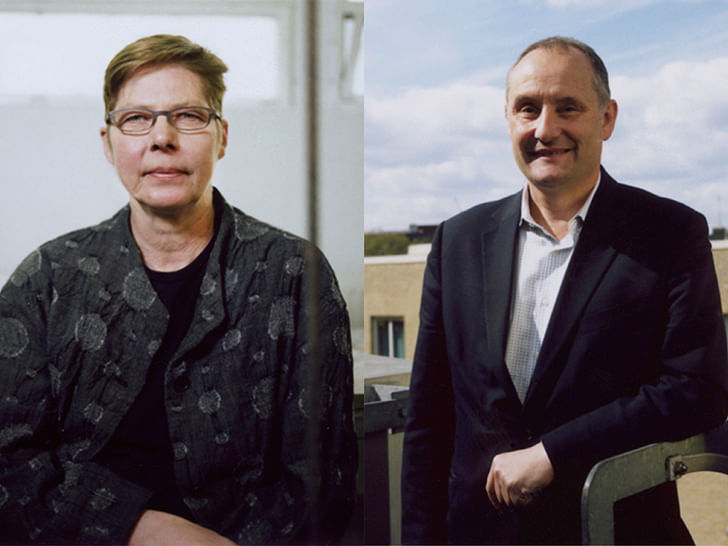
For this Deans List feature, we spoke to Andrew Stone, Head of the Cass School of Art, Architecture and Design at London Metropolitan University, and Signy Svalastoga, who is Head of Architecture, about how they continue to nurture the school’s philosophy, their impressive staff members and just what the future holds for the ‘Aldgate Bauhaus.’
The Cass, whose alumni includes Assemble, the Turner Prize-winning architecture collective, is known for its workshops, support of craft technique, and its extensive list of diverse courses that cultures cross-disciplinary collaboration. It is also known as a London institution and a very important part of the East End community. In late 2015, The London Metropolitan University announced its long term strategic plan to move all faculties to one site in North London—an announcement that caused much debate amongst creative professionals and students, as well as the local community. What quickly became apparent however, was the school’s importance within British arts education and its highly regarded teaching style.
For now, or at least until 2021, the Cass will remain at their new home at the Calcutta House before eventually, once again, relocating to the Holloway Campus as part of the school's One Campus, One Community plan. The move sees all staff and students from all disciplines under one roof, for the first time in the school’s history. This marks an exciting time for the school and one Andrew Stone is excited for. "We talk a lot about creative energy stimulated through the sharing of practices, but until now that had to be quite a structured condition, from September students will be exposed to each others process, thinking and practicing daily or hourly and within London. That is an exceptional circumstance and condition to be able to offer to all students" he told Archinect in the following interview.
What is your pedagogical stance towards Architecture as it relates to the Cass?
SSV: If we talk about Architecture graduates as they leave the Cass, we like to promote them as creative, practical and effective professionals who have a latent understanding of how to bring their capacities to bear upon the task of being a citizen. Cass Architecture is committed to the development of socially engaged forms of practice and the transformative power of things that are made carefully and well across all scales. This duty of care informs a rich variety of teaching agendas, our workshop culture and our practice networks.
So specifically, our pedagogy is predicated on a practice of doing, thinking, drawing, making, talking and living Architecture. Our student and staff community are not elitists or precious about Architecture but continuously questioning how to do Architecture, through listening, through learning and through drawing upon their intellect, their emotions and their intuition.
At the Cass, students are surrounded by highly motivated staff—architects, artists, designers and other creative practitioners—who are highly successful in their own fields of practice at the highest level. I feel that this is what is distinctive about the Cass and what sets us apart from equally important but different Schools. It also allows us to maintain a currency and renewal of practical focus without diminishing the importance and the role of the school’s research agenda and intellectual self-examination.
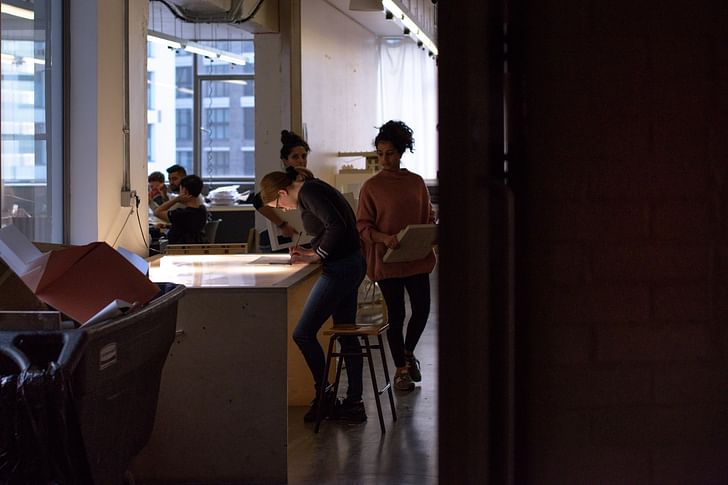

How would you distinguish the Cass’s programme from other architectural institutions based on that pedagogical stance?
AS: One of the great strengths of the Cass as a whole, and as a school, is the range of subjects on offer, and the desire to expose and engage students with these and the expertise on which they are founded. We operate on a vertical studio structure whereby practitioners and academics lead a programme of study through a particular practice position. The simplicity and commonality of structure that was designed by my predecessor Professor Robert Mull and I when the school was established, allows us to work distinctly within our subject fields, but also enables collaborations and opportunities for partnerships between disciplines and different practices where the opportunities arise. Sometimes that’s through live projects and other times, simply through the opportunity of pursuing an idea or an approach with other ideas and other perspectives. For example, this year one of the undergraduate Architecture studios worked alongside Animation students.
We have to balance cross-disciplinary conversations with the expectation of subject focus and excellence pursued in the studio major projects. One of the ways that we try and do that is through History and Theory Dissertation studios. These allow students to pitch towards a particular topic or theme that, through its theme, engages students from many other disciplines as well. The nature of the topic of a dissertation studio might attract students from Architecture but also, equally those from Graphic Design or Fine Art or Music or Film etc.
SSV: The particular character of the Cass as a school is the vast array of specialist, analogue and digital workshops available to Architecture students. Additionally, this allows students the ability to get expert help from specialist workshop staff while still being exposed to a range of design and making practices in other disciplines. This is exemplified year by year where students, often by themselves, arrange inductions to print-making or ceramics or any kind of process that is not necessarily embedded in the discipline of Architecture but is greatly enriching of our thought and practice.
AS: The range of courses, and therefore practices, is extremely broad. So, whether that might be engagement with the textile process, woven or print; whether it’s furniture making, timber or metal processes, both digital and analogue; or whether it's the vast range of graphic and print based processes—photography, again both digital and analogue; all these things combine to establish a familiarity or an awareness of a possibility of different processes.
SSV: We have also in the last 4-5 years set up a collaborative partnership with the Moscow School of Architecture (MARCH), which is very much based on kinship of pedagogic approach. Much of the student and research work is using London as a laboratory. The Moscow School of Architecture is also set up to search for a contemporary answer to urban and architectural debates in Moscow and so we think that this collaboration has the potential to cross examine, as it were, similar approaches in different locations.

Can you tell me a bit about some of your research projects currently going on at the school?
AS: Architecture has three very well established research groupings or research units. The longest running of those is the Architecture Research Unit (ARU) led by Professor Florian Beigel and Professor Philip Christou, has been part of the Cass and its predecessors, and involved in both built project work within the University and around the world that has been well recognized. We also have Cass Cities which is led by Professor Mark Brearley and The Architecture of Rapid Change and Scarce Resources area led by Professor Maurice Mitchell. Maurice has been a key part of the school for many years and established his own practice and pedagogy through live research projects in the UK, India, Nepal, Sierra Leone and elsewhere.
SSV: Much of that work has its origins in the projects that Maurice sets for his students. It’s an example of the fundamental link we see between Design and Research, where students are fellow researchers, and the relationship between pedagogy and research is articulated as something which is often understated in schools of architecture.
AS: We regularly document the way that our students and our practices operate together but, this year, we held an exhibition which explicitly sought to describe the relationship between five very successful, award-winning, practices, their studio teaching and the work the students created as a part of that relationship. We structured the exhibition this way to gain a sense of how an approach to practice informs an academic structure and the progress of a student seems, to us, a key component of what we do.

What kind of students do you feel are attracted to the Cass and why? What kind of student might flourish at the school?
AS: Well, we are based in Aldgate, on the cusp of the City of London and London’s East End. It’s one of the most dynamic and energized areas in central London and an area facing extraordinary change. There is a dynamism and intensity and our students thrive on it and we look to respond and contribute to it as fully as we can.
London Metropolitan University is a modern University in inner London and our undergraduate students are especially diverse in terms of background and experience. When we interview students for the courses, we seek to gauge their aptitude and their potential, therefore widening the opportunity for applicants in terms of what they've done before or what their pervious experience of the subject is.
SSV: In terms of the postgraduate courses, particularly the Professional Diploma in Architecture, we enjoy the reputation as one of the leading part 2 courses in the UK, attracting highly talented and committed students from virtually every university in the UK and beyond. This is largely to do with a well-known ethos, as mentioned before, and the high reputation of the practitioners teaching the courses. Similarly, part 3—which is the Postgraduate Certificate in Professional Practice in Architecture and the final stage before architects can go on to the professional register in the UK—enjoys a great reputation and students come from repeated recommendations from a great variety of leading practices or employers. A similar duty of care is again part of our ethos, as well as the delivery of this course, and is based on the assumption that the professional knowledge employed by good architects is not reducible to added value but can be developed and shared through action and interaction.
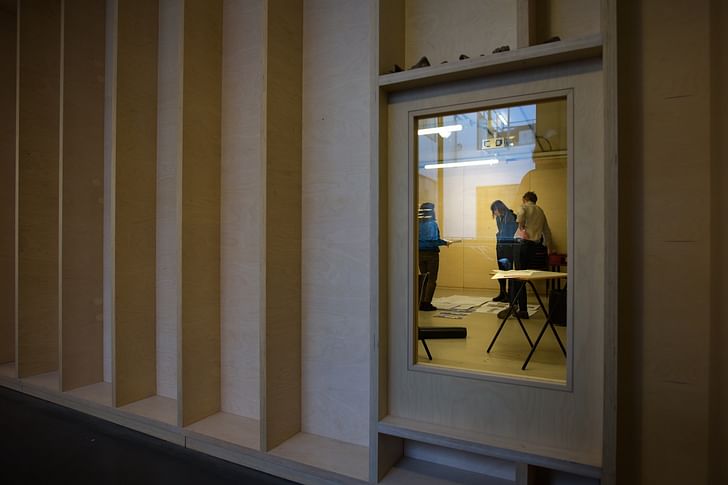
What kind of services and provisions does the Cass have to help students find work after graduation?
AS: Students at the Cass have a direct engagement with their professions from their first day. We introduce students to practitioners and their expectations throughout their studies so they can build their knowledge and skills accordingly. This is integral to all our courses, weaving their professional understanding with academic and creative ambition. And as part of London Metropolitan University, students also have all sorts of institution-wide careers and employability services, workshops and activities that they can tap into throughout their studies.
More specifically, within the school, we provide and set up a series of events and core components to the calendar that offer moments within the year whereby students at all levels are able to both present their work to external audiences with no relationship to their teaching, and receive subject specific guidance. This also provides support in terms of how they might establish their own practice—what kind of tools, knowledge and processes they might need to engage with, whether that’s about finding their own studio space, taxation or how you might fund an independent project.
To do this we have 2 specific events. One is called “Making a Living week,” which happens in the autumn term and focuses on how you might support your own practice. Then in the spring term, we have an event called “Celebration Week.” This is the mid-year review, when all studios, across all disciplines in the school present their work to date. They present it to a very significant and ‘weighty’ audience of critics who are architects, designers, journalists, cultural commentators, entrepreneurs and developers, who come to review and critique the work. This exposes students to a very professional moment of presentation at a point where the work is not as fully developed as it will be for the final show, but also enables conversation that is coming from different perspectives, from different approaches and points of view—and ones which are outside in the immediate comfort zone of the studio.
SSV: Also, at the end of year show, we organise particular employer events where we invite architectural practices to come in and not only to see the show but also to have the opportunity to meet with the graduates. We also have a well-established Cass Projects Office which incorporates RIBA chartered practice which enables students who are not yet qualified with the assistance and help to establish individual or collective projects. But of course fundamental to the make up of the Cass is the strong emphasis of the practitioners who teach and as such we have, implicitly, a vast network of practices that the students are exposed to on a weekly basis. All these examples are probably the key part in our very high employment rates of our graduate across all levels.
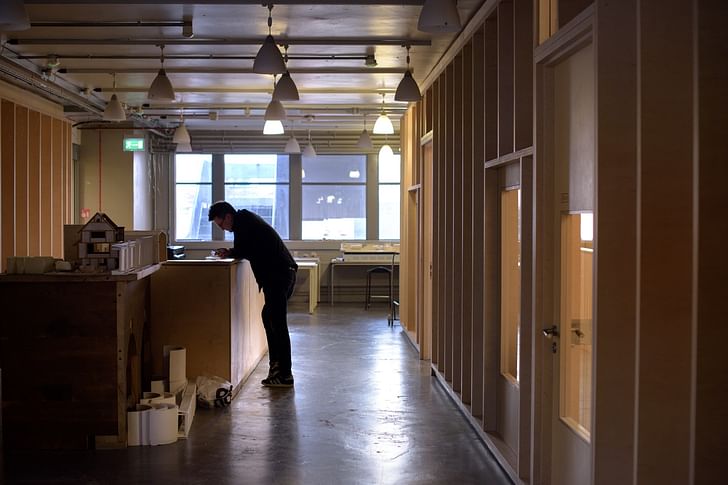
What kind of research and outlook do you maintain at the Cass to stay competitive with other schools in the market?
SSV: We have a well established ethos and a grounding of how we approach Architecture at the Cass. Every year we go through a period of critical reflection, asking ourselves about the relevance and the quality of the studios’ provision as exemplified in the output each year. Therefore, there is a continual process of renewal which is necessary in order to stay live to current issues within the profession.
AS: I think the other aspect is that the University has invested significant amount of money into the Cass buildings over the last 2 years. It is a vital and dynamic place to be and since September 2017 Architecture, Art and Design students and courses have been in one building for the first time since the Cass was established so this is an incredibly exciting moment. We talk a lot about creative energy stimulated through the sharing of practices, but until now that had to be quite a structured condition. Now students are exposed to one another's process, thinking and practice on a daily or hourly basis and within London. That is an exceptional circumstance and condition to be able to offer to all students and to the staff involved in the delivery of our courses.
What is the relationship between the school and London city government? What kind of potential partnership would you like to establish?
AS: We have a long-standing relationship at both the studio and School level with different parts of London’s governance and we continue to build and develop those relationships further. We believe we have had some very successful projects and we would like to continue to work with the Mayor of London’s office. After all, the current mayor of London, Sadiq Khan, is an alumni of London Metropolitan University so the sense of the civic presence of the University—where it sits, how it works within the city and who the students are—has a real presence. I think we have lot more to offer in terms of how we engage and develop our practice and its relationship to the different communities within the centre of London.
We are also annual participants in the London Festival of Architecture and the London Design Festival, hosting events and offering key collaborations and partnerships for students and for staff. Cass Cities is directed by Professor Mark Brearley who was previously Head of Design for London in the London mayor’s office.
The School and the University is part of the Aldgate partnership, which is a working group led by the City of London Corporation that brings together developers, companies and institutions engaged in the re-development and development of the area. Through the Cass’ Projects Office, we have enjoyed a wide range of commissions, temporary and permanent, and have worked with various London boroughs in the centre of the city and out in the suburbs. We have supported their research, their feasibility studies, and more directly, we have design involvement with their local communities and set projects within them to support, develop and build those.
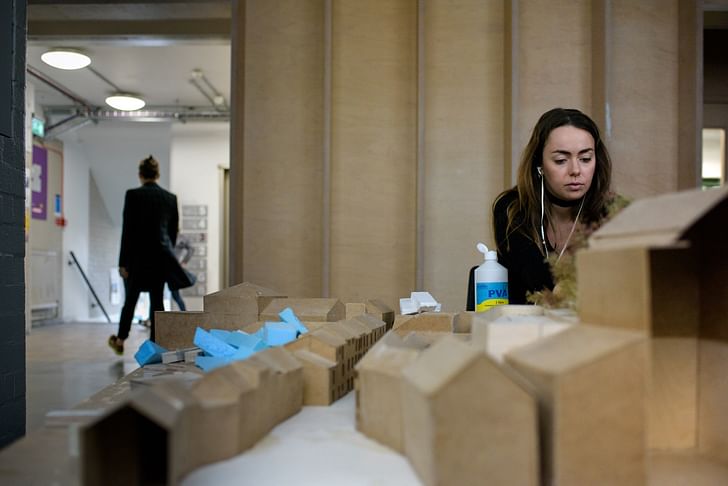

How important do you think it is for a person in your leadership position at an Architecture school to also be a practicing architect or have practiced at one time?
SSV: As Head of Architecture, I feel its fundamental to what one can bring to the job. Being a practicing architect comes with a tacit understanding of the various complexities involved and I think that is fundamental to being able to orchestrate the post, the course delivery, the right kind of staffing and prepare the students for a multitude of architectural practices.
AS: I think as Head of School at the Cass, our relationship to practice is key and it’s one of our greatest strengths. I, and all the senior management of the school, are or have practiced in their field and that integration of practice, theory and pedagogy is critical. The school’s 2,000 or more students study courses across Art, Architecture and Design and I have been a part of the Architecture School at the University, as part of the Cass and before, for 25 years. But I am an interior designer, so my practice perspective is almost completely architectural with one (usually) quite small step removed. And in the context of the diversity of the subject matter across the Cass, I think that’s quite a healthy position to be in. The professional structure of architectural education has a rigor that rubs off on other areas, as do the other subjects in return. The different approaches students have to their subjects of Design and Art, and their willingness to seek out collaboration an experimentation beyond the profession expectations nurtures this.
SSV: I think what is fundamental for someone in a leadership position in Architecture at the Cass is to continue to teach. In fact, I think uniquely at the Cass everyone is involved in teaching and so I just want to emphasize that link again between practicing and teaching that is fundamental.
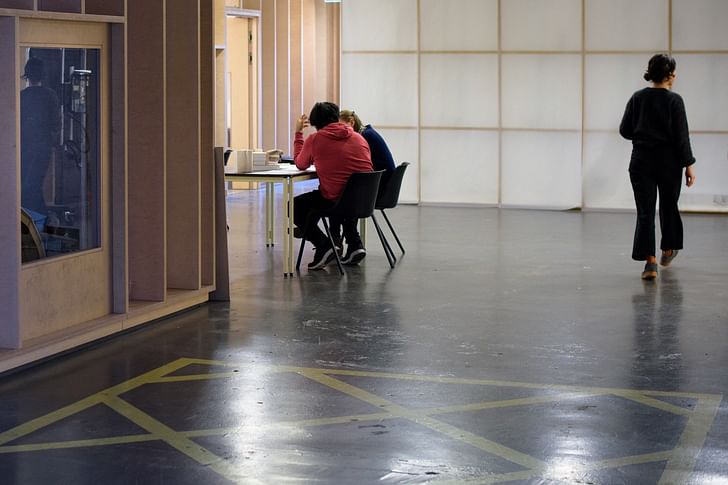
When the time comes for you to leave your position. What kind of overall changes would you have hopes to have made happened?
AS: Well, I am not planning to, not planning to leave that is. We are in a middle of a big wonderful project. There is so much happening and so much to look forward to. There is a phenomenal energy and drive amongst staff and students across the school both within their subject matter and courses but also within the extraordinary range of extracurricular activity and projects that go on alongside the core provisions, whether that’s in exhibitions, performances etc.
The prospect of collaborations and development that may emerge over the next few years is something I want to be a part of. At the Cass, we have been building a team of colleagues, each experts within their field, each who have an ambition and excellence within their particular area, who are supported and underpinned by a collective shared ethos of the school that we seek to enthuse all students and all members of staff with in pushing forward.
SSV: So, in answering that question, one would hope to have developed a group of staff who have been given the opportunity and the freedom to flourish as part of a community and therefore, if anyone of us would leave our position, there would be a sense of continuity and confidence to carry on and refine the projects of the Cass.
How do you teach students to have a code of ethics in architectural practice and how do you form what that code of ethics might be?
SSV: Going back to the beginning question about the distinctiveness of architecture at the Cass, I talked about our commitment to the development of socially engaged forms of practice and spoke to the transformative powers of the things that are made carefully and well across all scales. We refer to the duty of care, which is one of the fundamental duties of an architect, and how that in turn informs a rich variety of teaching agendas. The duty of care can be seen in a multitude of ways, the duty to the city, our planet, to each other, to our students and to our resources.
It poses a fairly fundamental question that we keep asking and re-asking ourselves and our students and I think it’s one of the important characteristics of our students and graduates that they have a well-rehearsed notion of their duty of care. The concern and engagement with real world issues as described before does not preclude the imaginative and irreverent proposals that question the various current orthodoxies of society and practice. On the contrary, it sets up challenges that foster a debate about what a code ethics should be, not just for Architects but for the civic life.
Ellen Hancock studied Fine Art and History of Art at The University of Leeds and Sculpture at Mimar Sinan Fine Arts University in Istanbul.Now based in London she has a keen interest in travel, literature, interactive art and social architecture.
No Comments
Block this user
Are you sure you want to block this user and hide all related comments throughout the site?
Archinect
This is your first comment on Archinect. Your comment will be visible once approved.